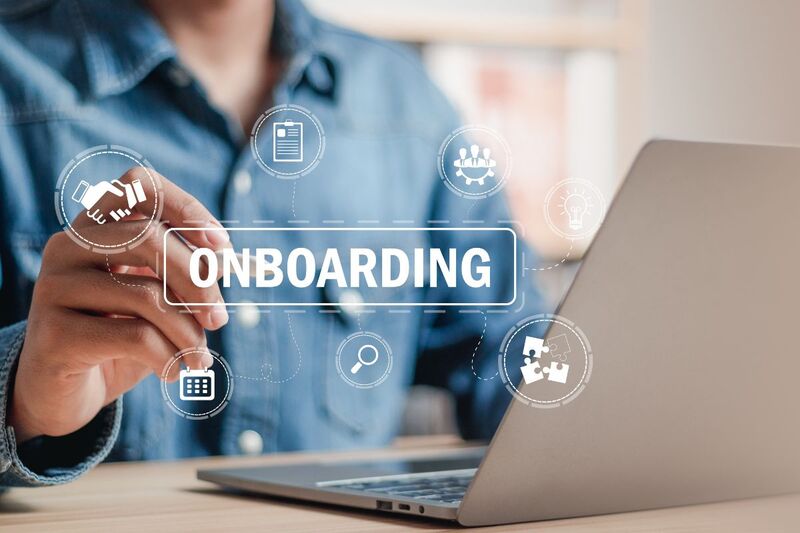Cracking Retention in 2026: Why Onboarding Makes or Breaks Engagement

This article is written in English for readers in Singapore. Chinese and Japanese translations are available on our website.
Why Retention Begins Before Day One
Singapore’s job market is entering a new phase of “selective mobility” — workers aren’t switching jobs as frequently as in 2022–2023, but when they do, they’re far more deliberate about culture fit and career integration.
In this environment, onboarding has quietly become the most critical retention lever.
According to Reeracoen’s APAC Workforce Whitepaper 2025, 74% of employees decide within their first 90 days whether they’ll stay beyond the first year. Yet, only one in three companies in Singapore have a structured onboarding plan that extends beyond the first week.
As 2026 approaches, forward-thinking HR teams are redefining onboarding — not as an administrative checklist, but as a strategic engagement process that boosts productivity, belonging, and retention.
The Retention Equation: Engagement Starts Early
A strong onboarding experience influences three major outcomes:
1. Retention:
Employees who experience effective onboarding are 2.6 times more likely to stay for at least three years (LinkedIn Workplace Learning Report, 2025).
2. Productivity:
Structured onboarding reduces time-to-productivity by up to 30%, according to MOM’s SkillsFuture studies — especially when paired with mentoring and job shadowing.
3. Employer Branding:
In the age of Glassdoor and TikTok job reviews, onboarding is now the first public impression of your company culture. A positive start directly correlates with how employees describe your workplace externally.
Singapore’s 2026 Retention Challenges
| Challenge | Description | 2026 Implication |
|---|---|---|
| Shorter job lifecycles | Median tenure in Singapore has dropped from 5.1 to 4.4 years since 2019. | Employers must strengthen first-year engagement. |
| Hybrid onboarding fatigue |
Remote hires report lower connection and clarity. |
HR needs blended (digital + physical) onboarding touchpoints. |
| Generational gap | Gen Z expects mentorship and transparency from Day One. | Customise onboarding by age and career stage. |
| Global talent mobility | Professionals under One Pass relocate easily. | Onboarding must include cultural and relocation support. |
The bottom line? Retention no longer starts at the first appraisal — it starts the moment the offer is signed.
Introducing Reeracoen’s New Onboarding Guides
At Reeracoen Singapore, we recently launched two exclusive Onboarding Guides — one designed for clients (employers) and one for candidates.
For Clients (Employers):
- 30-60-90 Day Playbook for new hires.
- Manager check-in templates and cultural alignment tools.
- Practical checklist for post-hire integration.
For Candidates:
- Personal 90-Day Success Planner.
- Tips for communicating with new managers and navigating probation.
- Mindset guide for confidence and growth in the first three months.
Both guides are now available exclusively to Reeracoen’s partners and jobseekers — helping ensure that the placement journey continues smoothly long after Day One.
Best Practices for 2026 Onboarding Success
1. Extend onboarding beyond HR.
Managers and teammates must co-own the process. Employee experience improves by 42% when direct supervisors actively participate in onboarding conversations.
2. Make the first 90 days measurable.
Set tangible outcomes such as training completion, project delivery, and culture fit milestones. Use these to align performance discussions.
3. Personalise by generation and job level.
Younger professionals value mentoring and purpose-driven introductions; senior hires prefer autonomy and clarity of metrics.
4. Blend human warmth with digital convenience.
Use automation (e.g., e-signatures, pre-start orientation modules), but never skip the human element — welcome lunches, buddy systems, and check-ins still matter most.
5. Close the feedback loop.
Collect onboarding feedback within 45 days and adapt your process continually. This creates an evidence-based culture of improvement.
Reeracoen’s Retention Impact Framework
Based on our placement and follow-up data across Singapore, Vietnam, and Japan, Reeracoen has observed:
- Clients that adopt structured onboarding retain 91% of hires past six months.
- Early engagement (through welcome communication before Day One) reduces no-shows by 35%.
- Employers using our onboarding templates report a 28% faster ramp-up time for new hires.
This proves that onboarding isn’t just HR hygiene — it’s a performance and retention multiplier.
Key Takeaway
The strongest retention strategy for 2026 begins before the employee even starts.
By integrating structured onboarding, coaching, and early career support, employers can unlock productivity, loyalty, and reputation gains — without needing massive pay increases.
🔍 FAQ: Onboarding & Retention in Singapore 2026
Q1. Why is onboarding so crucial for retention?
Because most turnover happens within the first 6–12 months. Good onboarding builds belonging and clarity.
Q2. How long should an onboarding programme last?
Best practice: 90 days minimum, including 3 structured check-ins.
Q3. Can onboarding be effective in hybrid settings?
Yes — when balanced with in-person touchpoints like mentor meetups or office days.
Q4. Are Reeracoen’s onboarding guides free for clients?
Yes, our onboarding toolkits are available exclusively for Reeracoen Singapore clients and successfully placed candidates.
💼 For Employers: Submit "Onboarding Guide" to Request for your Reeracoen Onboarding Guide.
👩💼 For Candidates: Download your 90-Day Success Planner by Sending “Onboarding Guide” in the Message.
✅ Final Author Credit
By Valerie Ong (Regional Marketing Manager, Reeracoen Singapore)
Published by Reeracoen Singapore — a leading recruitment agency in APAC.
🔗 Related Articles:
- Salary & Benefits 2026: What Singapore Employers Should Budget For
- Top 10 Hiring Trends to Watch in 2026 (Singapore)
- AI in Hiring: Policy, Bias & Practical Guardrails for HR
📚 References
- Reeracoen × Rakuten Insight APAC Workforce Whitepaper 2025
- Ministry of Manpower Labour Market Report Q3 2025
- LinkedIn Workplace Learning Report 2025
- SkillsFuture Singapore: Skills Demand Outlook 2025

Disclaimer:
The information provided in our blog articles is intended for general informational purposes only. It is not a substitute for professional advice and should not be relied upon as such.
While we strive to provide accurate and up-to-date information, the ever-evolving nature of certain topics may result in content becoming outdated or inaccurate over time. Therefore, we recommend consulting with qualified professionals or experts in the respective fields for specific advice or guidance. Any actions taken based on the information contained in our blog articles are solely at the reader's discretion and risk. We do not assume any responsibility or liability for any loss, damage, or adverse consequences incurred as a result of such actions.
We may occasionally provide links to external websites or resources for further information or reference. These links are provided for convenience and do not imply endorsement or responsibility for the content or accuracy of these external sources. Our blog articles may also include personal opinions, views, or interpretations of the authors, which do not necessarily reflect the views of our organisation as a whole. We encourage readers to verify the accuracy and relevance of information presented in our blog articles and to seek professional advice when needed. Your use of this website and its content constitutes acceptance of this disclaimer.






